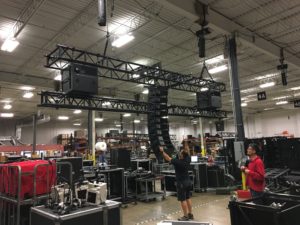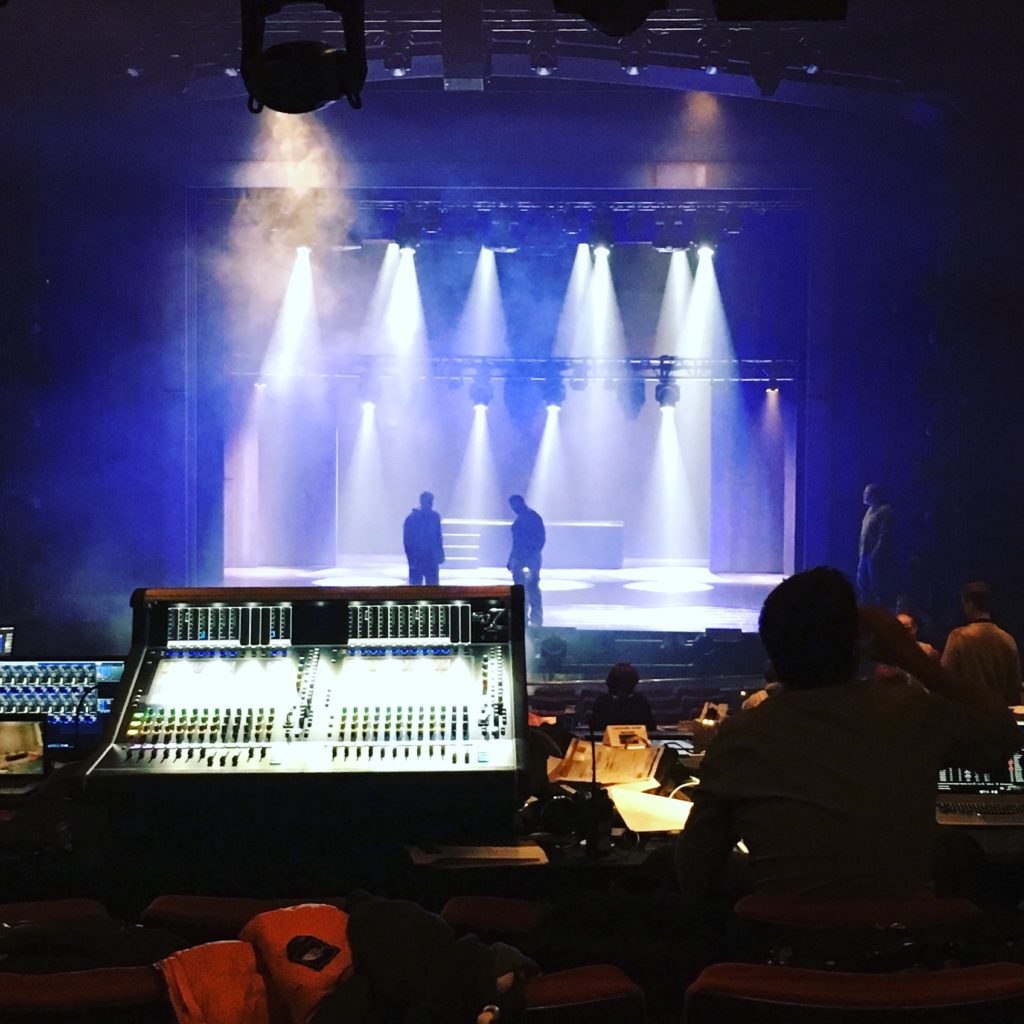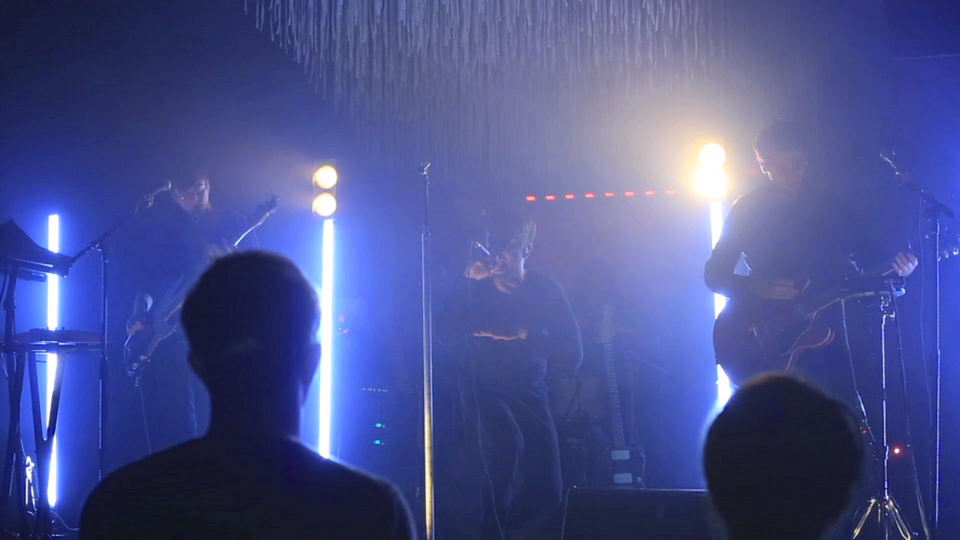Working as the Production Sound Engineer for The Bodyguard US National Tour was a terrific experience. My responsibilities were a bit more than a typical PSE role since the design team had already built this system many times before and none of the design team were a part of the shop prep. It was up to me to determine how to package and cable the system by interpreting the designer’s spec and translating it to Masque Sound’s inventory. The main PA is 12x Meyer Sound Leopards installed in 2x stack-

able 8′ towers with a 5′ lower section with a Meyer Sound UPJ-1P for infill.
Gary Stocker designed these towers with an internal gimbal that allows panning and tilting of the pinned array. Array angles can be changed easily since the new Leopard bottom up captured rigging system is very easy to use.
The UPJ-1P infill has limited tilt, but a wide range of panning. It provides additional front fill coverage for venues with wide proscenium openings. The additional room at the bottom of the tower provided a nice space for a patch panel and power panel to make connecting the towers simple and efficient.
The design team wanted to use the Meyer Sound 900LFC subwoofers in their cardioid configuration, and since this did not fit inside the tower footprint, they are stacked three high next to the tower.
The Center Cluster consists of 10x Meyer Sound Mina speakers, hung on a truss with 2x Meyer Sound 900LFC subwoofers on either side. The FOH Electrics truss is hung underneath.

The rest of the system is a straightforward touring rig. There are around 40 channels of wireless mics with Sennheiser 1046 receivers and Sennheiser 5212 transmitters. There is an 8 channel Sennheiser 9000 series digital system used for handhelds on all the pop songs for the show which sound particularly good.
The console is a DiGiCo SD7T with a redundant Waves SoundGrid Server system. Band monitoring is handled by the Roland M48 mixer. This system interfaces with the DiGiCo SDRack via a MADI output. Interfacing the system this way required the Associate Designer, Tom Marshall, to be very creative in the layout of the MADI stream since the M48 picks off the first 40 channels of inputs of the MADI stream only. To be able to provide a drum submix to the M48 system, he placed an AES I/O card in slot 4 of the rack and physically looped the outputs to the inputs of this card. This allowed him to send groups to the M48 efficiently.
Overall, the tech process went very smooth since the show has been produced in many other locations. We used a DiGiCo EX-007 for programming help, with Allison Ebling at the SD7 and Tom Marshall at the 007. Both Tom Marshall and Richard Brooker were a pleasure to work with, and I couldn’t have pulled it off without the support of Masque Sound, including Gary Stocker, George Hahn, and Scott Kalata.


